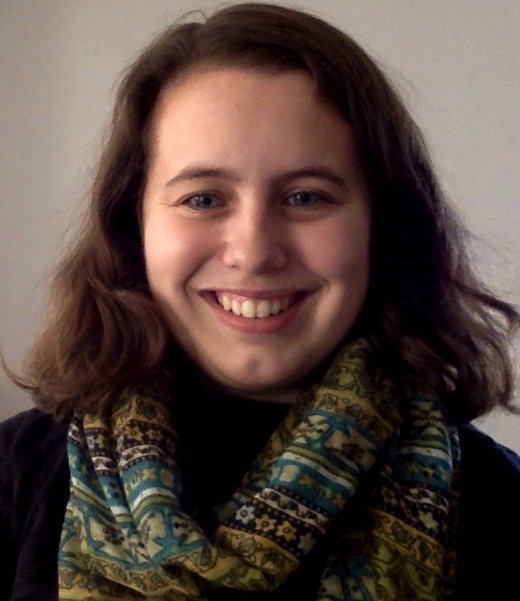Writing advice I've often received is to analyze some of your favorite books, to study what they do well and how they did it. Recently, I decided to test that advice out when it comes to writing a multi-POV book. In other words, a book with more than just two different point of view characters.
Step One: Identify list of books/authors who handle multi-POV stories well.
My list*:
- Truthwitch (Witchlands series) by Susan Dennard
- Six of Crows by Leigh Bardugo
- Children of Blood and Bone by Tomi Adeyemi
*I looked at YA Fantasy specifically because that's what my book is, but I think this process and the conclusions I drew from it may be helpful for contemporary/realistic fiction multi-POV stories as well.
I also put out a call for other books on Twitter, but I've yet to read/analyze all of them. Here were some of the suggestions:
- Spinning Silver by Naomi Novik
- This Savage Song/Dark Duet by Victoria Schwab
- A Darker Shade of Magic series by V. E. Schwab
- One of Us is Lying by Karen M. McManus
- Immoral Code by Lillian Clark
- A Torch Against the Night by Sabaa Tahir
- Three Pennies by Melanie Crowder
- The Raven Boys by Maggie Stiefvater
- Invictus by Ryan Graudin
- Rick Rioridan's Books
Step Two: Analyze the books (I focused specifically on how they constructed the story using multi-POV)
TRUTHWITCH
- Multiple POVs within the same chapter, scene breaks indicate change in POV, time, and/or location
- 83 total scenes (I may have miscounted though as I was quickly paging through the book rather than rereading it in full)
- 4 POV characters
- Safi=29 scenes
- Iseult=20 scenes
- Merick=20 scenes
- Aeduan=14 scenes
(I used a different color for each POV character to look at the order of the POVs, how often they occurred, and to look for patterns)
- All POVs are written in third person.
- Each scene's opening sentence establish the POV.
- Within the first 6 scenes, three different POVs are introduced.
- 8 scenes is the longest gap between Safi POV scenes.
- Aeduan doesn't get a POV until 20 scenes into the book.
SIX OF CROWS
- One POV per chapter
- 48 chapters (not including the opening POV of Joost and the closing POV of Pekka Rollins)
- 5 POV characters
- Inej=15 chapters
- Kaz=9 chapters
- Nina=9 chapters
- Mathias=6 chapters
- Jesper=9 chapters
(I ran out of different colored high lighters, so I used different colored pens for this one. Pardon the shadows)
- All POVs are written in third person.
- Each POV is established with chapter header and opening sentences.
- Within the first 6 chapters, four different POVs are introduced.
- 5 chapters is the longest gap in between Inej chapters.
- Jesper's POV isn't introduced until Ch. 7.
CHILDREN OF BLOOD AND BONE
- One POV per chapter
- 86 chapters
- 3 POV characters
- Zélie=40 chapters
- Amari=22 chapters
- Inan=24 chapters
- All POVs are written in 1st person.
- Each POV is established with chapter headers.
- Within the first 6 chapters, each of the POVs are introduced.
- 6 chapters is the longest gap in between Zélie chapters.
- Inan's POV isn't introduced until Ch. 6.
Step Three: Draw Some Conclusions
1) Based on the three books I studied, the opening chapter is from the POV of whichever character has the most POV scenes or chapters in the book.
Interestingly, this does not directly connect to them being seen as the main character though. For example, the description of Six of Crows sets up Kaz as the main character, yet the book's first (real) chapter is from Inej's POV, and she has the most POV scenes in the book.
2) The opening chapter is usually also from the POV of a more active/bold character's POV (though of course there are exceptions).
3) I need to analyze each book more deeply—a full reread with annotations—to determine if the opening chapter is usually also from the POV of the character who has the biggest, less subtle character arc, but that's my hypothesis from my surface level analysis of these books.
4) Most of the books ground the reader in the beginning 4 chapters/scenes by only using two POVs before adding more.
5) 8 scenes or 5-6 chapters is the longest gap between scenes or chapters for the largest POV (for the three books I studied).
6) The latest a character's POV is introduced is the 20th scene or Ch.7.
7) None of the three books had a strict rotation of the POVs.
Step Four: Applying it to Your Work
Obviously, I only analyzed three books and the conclusions I drew are not hard and fast rules anyone should follow. Feel free to wait to introduce a character's POV until the 21st scene or the 22nd. Start the book with the smallest POV character. You do you. This was purely me analyzing the structure of multi-POV books to try to help me revise my multi-POV YA Fantasy book.
So, how has this analysis helped me?
A) It gave me different things to consider when deciding which POV character should open the book.
B) It made me feel more comfortable about not having a strict rotation of the POVs (which is something I forced myself to do when writing the first draft).
C) Likewise, I learned that it's 100% okay for not all POV characters to have equal POV page/screen time (scenes or chapters).
D) I discovered that you can successfully use scene breaks to indicate changes of POV within the same chapter. It's tricky and sometimes the reader might have to go back and reread a few lines to remind themselves of whose POV they're in, but it's doable.
What are some of your favorite multi-POV books? What are some their different characteristics you've noticed? Comment below!













